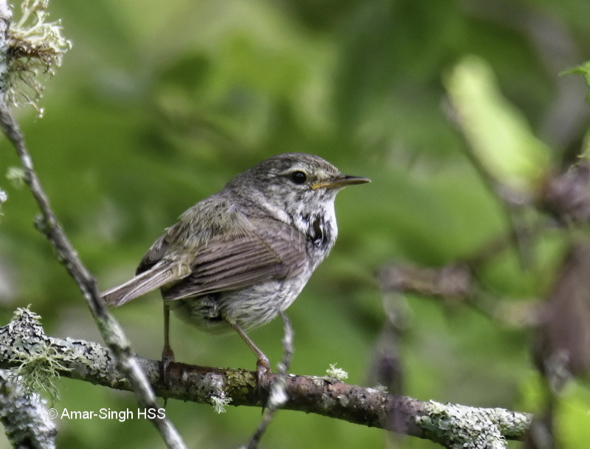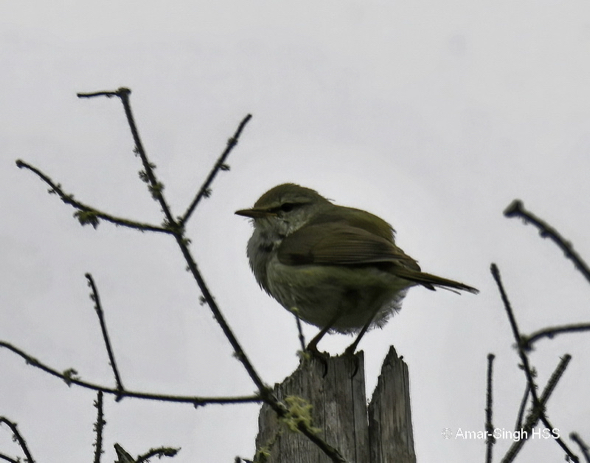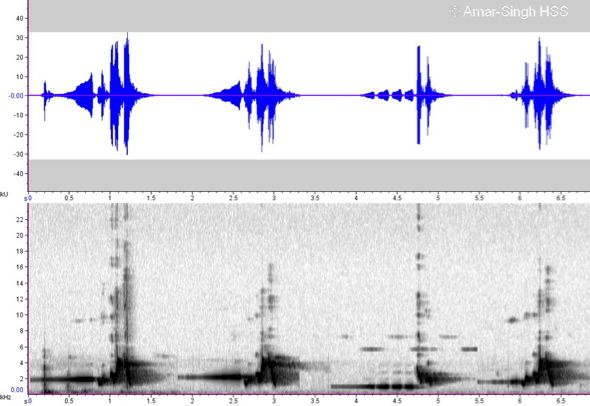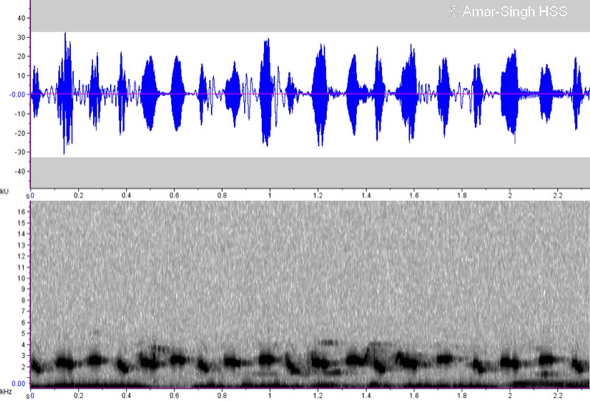“There are three birds that fill the Japanese spring-summer with song: the Narcissus Flycatcher (Ficedula narcissina), the Japanese Robin (Larvivora akahige akahige) and, the most noticeable of the three, the Japanese Bush-warbler (Cettia or Horornis diphone cantans).
“The Japanese Bush-warbler is known in Japanese as Uguisu (鶯) – ‘the bird that tells of spring’. Some individuals in Japan do not recognise the arrival of spring until they have heard the Uguisu sing. In Japanese history the Uguisu has been portrayed in poetry and art for beauty and the characteristic song. They were also known as the ‘Japanese Nightingale’.
“The bird is not the easiest to spot and, like many Bush warblers, is often in the undergrowth. However, the calls are heard all the time in wooded areas. There are a number of song/call types but the two commonest, loud summer songs, are made by the male (sexes are similar but the male can be recognised by the songs).
“They have been described (in words) by different authors in a variety of ways and I will not add to the descriptions. Occasionally the birds come out onto a perch to sing (above, below) and this is accompanied with a lot of tail movements.
“The commoner song, a ‘type one’ song, is an explosive call last ¾ of second that starts with a low grade whistle and then explodes into a loud whistle. It is repeated 5-8 seconds part. Kennerley (2010) describes it as ‘wuuuuuuuuweeuweechu’. But there is much minor variation in the same bird and between birds. The sonogram and waveform of 4 such songs/calls are shown below. You can see in the waveform and sonogram the variation in the structure of the calls.
“A recording of the songs/calls is found HERE. The less common song, a ‘type two’ song, is a unique and wonderful one. It last for a prolonged period (14 & 32 seconds for two recordings). It starts off in a ‘hurry’ with a note every 0.1 seconds but later slows down to 2-3 notes per second. Brazil (2018) best describes it as ‘pipipipi … keyo keyo…’ while Hamao (2007) says it sounds like ‘Pirrrrrr-kekkyo, kekkyo…’ and calls it the ‘Taniwatari’ or valley crossing call.
“There have been speculations on purpose of this call (alarm call) but Hamao (2007) who has studied these Bush-warblers since 1990 suggest they are used in a variety of contexts.
“The sonogram and waveform of a small segment (proximal part) is shown above. A recording of the songs is found HERE.”
Dato’ Dr Amar-Singh HSS
Ipoh, Perak, Malaysia
5-9th June 2019
Location: East Hokkaido, Japan
References:
1. Buri-chan. Uguisu: The bird that tells of spring. April 2013 (available HERE)
2. Shoji Hamao. Japanese Bush Warbler.Bird Research News. Vol.4 No.2 2007 (available HERE)
3. Mark Brazil. Birds of Japan. Helm Field Guides 2018
4. Peter Kennerley, David Pearson, B Small. Reed and Bush Warblers. Helm Identification Guide. 2010












